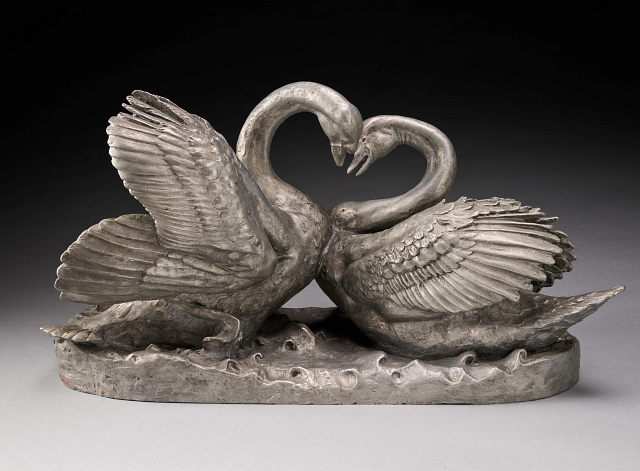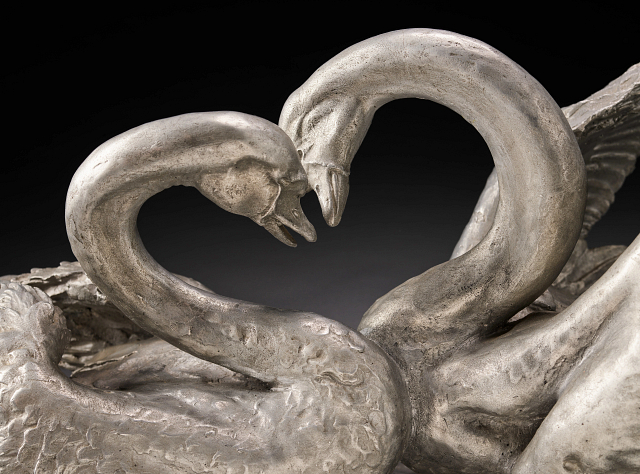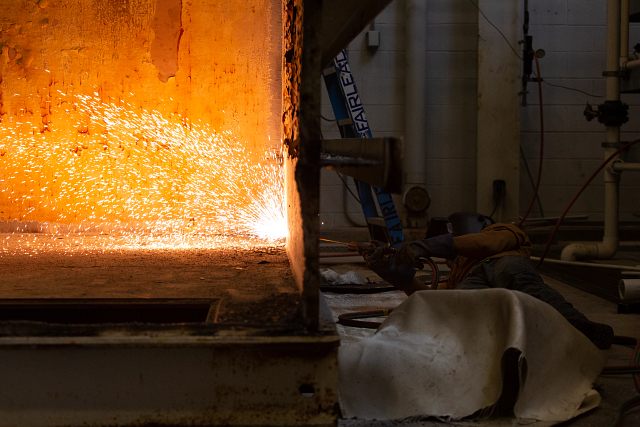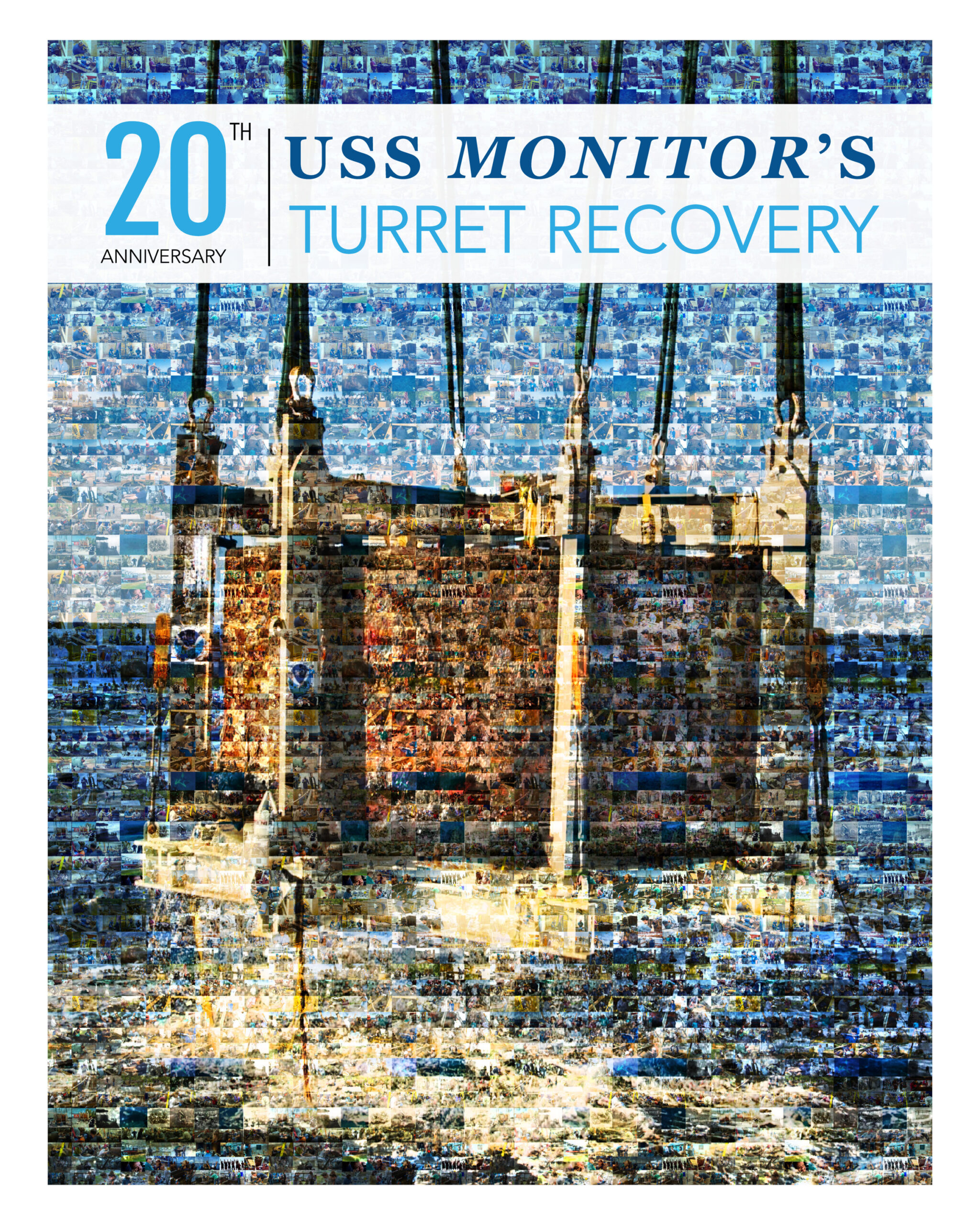This past year was amazing at The Mariners’ Museum and Park. We opened Lil’ Mariners’ Play Zone, started the process of reopening Mariners’ Lake to members and student groups, began reimagining our Exploration Gallery, made considerable strides in the Monitor conservation project, launched a new website, completed a grant to photograph the Peter Ifland Collection of navigational instruments, and so much more.
On top of the spectacular behind-the-scenes work the entire Museum team has done, we were lucky enough to invite the community back for our Evening Lecture Series, Sips & Trips, and The Mariners’ Fall Festival. All were phenomenal returns of our favorite events presented with new spins. Not to mention the welcome sense of normality that they brought.
If you’ve been reading our blog for a while or following us on social media, then you know Amanda and I were there through it all with our cameras. And that means it’s that time of year, once again, to take a look back at our top 10 favorite photos from 2022. We had many choices with so much happening and more than 10,000 finished images between us.
Without further ado, please enjoy our third annual Favorite Photos Review. Kick us off, Amanda!
AMANDA:
Hello again, friends! We always say, “This year went by so fast!” But with all the activities and events of 2022, that might be the understatement of the decade.
My selection of images this year is a bit different than years prior. I know you’re used to seeing pretty sunsets and landscapes. However, most of this year’s photos are more of what I consider “working” photos. The year 2022 was soooo insanely busy for us; 99% of all my pictures came from assignments.
But don’t worry! I’ll ease you into it so it won’t feel like such a stark contrast. You’ll hardly notice by the end! Promise! 🙂
Let’s start with a photo where I did get to be a little creative. It’s the only image from my selections that wasn’t from a direct assignment.
Long Shadows and Lovely Light

I love this tree!
It’s a Japanese Maple that sits in our inner courtyard, and I pass it daily. There are benefits to being in the same place for many years. One learns the seasons of peak bloom and change. For example, I know that many of the flowers and flowering trees in the front of the Museum bloom in late March to mid-April. The courtyard flowers typically bloom from April to May, and the tree leaves in Mariners’ Park change in stages from early to late November. Toward the end of November, the leaves on this beautiful maple tree turn a fiery red! And every single year, I wait oh so impatiently to see it!
This year, I was afraid I would miss its peak foliage over the Thanksgiving holiday. But when I returned to work, there it was, glowing proudly! It was the first thing I noticed when I entered the courtyard to get to my office that morning. I literally squealed with excitement!
Now, I had to wait for the sun. Sooo much waiting in nature photography!
When the light was right, I first noticed the long shadows in the late afternoon sun, and I knew I wanted that front and center. Then it was a matter of composition. The colonnade framing it and the touch of sun flare popping out from behind the leaves balanced it all together. For two days, I took multiple photos with multiple angles, some higher or lower, more to the left or right. I zoomed in or out. I went out a little earlier on the second day. And after much deliberation, this one is my pick!
In the end, this was one of the first images from the first day. That’s almost always how it works in photography. You get the right shot once you’ve examined the scene, know what you want to capture, figured out how to shoot it, and are precise in making it. However, once you start OVERthinking it, the image never turns out how you saw it in your mind’s eye.
BROCK:


One of the big projects this past year was remodeling the Huntington Room, one of our event spaces. The old room had a small exhibit space dedicated to Anna Hyatt Huntington and her sculptures. Our crew dismantled that exhibit space as part of the refresh.
While Anna’s sculptures, formerly on display for many years, were off exhibit awaiting their new cases, it was a perfect time for them to get new glamour shots. I love all the sculptures I photographed, but this aluminum piece of two swans is my favorite. I enjoy photographing works of art, spending time with each piece, examining it, and taking in the details. No one sculpts animals as Anna Huntington did; these swans are no exception.
That is without mentioning their heads coming together, completing the shape of a heart. That, coupled with the grace of their movement, the soft grey palette, and subdued highlights, make this work evoke a sense of calm serenity.
This sculpture and several others by Anna are now displayed in the new Huntington Room. They celebrate her art and contributions to The Mariners’ Museum and Park.
AMANDA:
My next photo is from what was probably my favorite program to photograph in 2022. As Brock mentioned, we’ve started working on reopening Mariners’ Lake for recreation. To “Test the Waters,” so to speak, we offered a Museum Members’ paddle to gather feedback, help us find out what worked, what didn’t, and make improvements from there.
To me, this image has everything. Gorgeous Autumn colors, perfect light, and the connection The Mariners’ Museum and Park’s mission strives to cultivate.

BROCK:

As I mentioned, we concluded a grant in 2022 to photograph the entire catalog of Peter Ifland’s navigational instruments. Most of the project involved photographing the instruments to document them thoroughly. That meant shooting each one in a similar and set way, with consistent, even lighting, free of harsh shadows and highlights.
It’s not the most exciting photographic exercise, but it’s necessary. Photographing these objects in such a way enables researchers to better examine the pieces through imaging. This has a two-fold benefit. First, it allows people around the world to have easy access to this outstanding collection. Second, reliable photographs mean you can get information digitally rather than physically handling the artifacts.
We wrapped the required grant work a few weeks early, so we couldn’t let this opportunity pass us by. It was time to get a little more creative. We pulled a series of some of our favorite and most interesting instruments and gave them a little more care and attention. This one is my personal favorite…

AMANDA:
This photo might look familiar to you if you’re a Museum Member. It was the Museum´s 2022 Holiday card image!

Getting the photographs taken, finalized, cards printed, and mailed, took a village. Our graphic designer, Ann Marie Jenkins, conceptualized the idea; the Advancement Department decorated the tree. Students from our annual Tidewater Wooden Boat Workshop program built the boat. The Park Department’s Lake Program Manager Kelly Garner, along with Park and Trail Technicians Ioan Yamakov, Javier Camacho, and Matt Gannonm, provided the row boat’s transportation to Mariners’ Lake, how to anchor the tree into the boat, and how to light it.
Then our Director of Multimedia Production, Jenna Dill, helped get Kelly and his kayak in the water to tow the boat and anchor it in position. I got a 360° view of the tree since our Director of Protection Services, Jon Nugent, gave our videographer, Kyra Duffley, and me a lift in one of their boats. Also, several team members arranged and confirmed dates and activities with others.
Once I finalized all the edits with Ann Marie Jenkins, our graphic designer, and our Senior Director of Advancement, Luisa Vázquez-López approved the final proof, our Advancement team swooped in to work their magic to send the image to print. Our Individual Philanthropy Coordinator Olivia Harding addressed all the envelopes. Then Olivia, Membership Philanthropy Coordinator Rebecca Guest, and Philanthropy Assistant Tanti Brownley took turns mailing them out.
I captured and processed the photo; however, so many Mariners’ team members had a hand in creating the entire scene and getting the holiday cards out to our community. It’s so much fun to be a part of something that our Team uses these cards to express the gratitude we all feel for our members, supporters, and partners.
These holiday cards are simply a way to say “Thank you” to our Members and Donors for all the support you show us throughout the year.
BROCK:

This photo is quite different from the rest of my top picks for 2022. Since Amanda started working at the Museum, I’ve been able to focus more of my time on the digitization and photography of our Collection. But every once in a while, if she’s away, I get to cover some of the happenings around the Museum.
This past year our Conservation team and a crew from Fairlead dismantled the tank that once held Monitor’s condenser. With the treatment of a gun carriage completed and the condenser sufficiently disassembled, the pieces could move out of this tank. This open space allows the Monitor conservation crew more room to finish treating other large artifacts.
Metal, sparks, fire, big machinery? Yes, please. I’m there—anytime!
AMANDA:
Hands down, the hottest new element of 2022 for me was The Lil’ Mariners’ Play Zone! Once it opened, word spread like wildfire, and families have been out playing in the heat, cold, and rain ever since!

Getting out and photographing these families was the highlight of my summer. I’m always so impressed with the kids’ creativity when using the playground equipment. And they love being photographed! One little girl even “paid” me in leaves. HAHA! My heart nearly exploded. If I could pay my bills and make purchases using foliage, I’d accept that as payment over real money any day!
In this photo, the young girl was swinging super high on the swing set. I wanted to bring out the blue sky with white fluffy clouds behind her while still focusing on her. Capturing her at just the right height when she’s at the apex of her swing, between the trees, so we can still see her silhouette proved challenging, but our Lil’ Mariner didn’t seem to mind.
BROCK:
Oh, glass. Where, oh where, should I even begin with glass? Well, hold on. I guess I did write about it in our recap for 2021. And probably several times before that. Look, glass is tricky.

Glass is also so much fun to photograph. There’s something satisfying about figuring out how best to light it. Colored glass can be a bit easier because then, at least, it isn’t just entirely clear. But still, there’s such a trick to photographing something that is meant to be seen but transparent. And in this case, something that is so brilliantly blue but still needs to be visually read as glass.
This artifact makes my list because our intern Emily Ransone and I got to work on it together and figure out the puzzle of how best to shoot this object. The result is an image that shows the brilliant blue of the glass while still allowing us to see its contents. What an extraordinary artifact!
AMANDA:
The last photo is not only one of my favorites technically; it’s of one of my favorite people. This is Emily, our photography intern for several months in 2022. It was a pleasure to take someone under your wing who is so talented, creative, and kind.
Brock needed a photo for his article on digitization in the Museum’s 2022 Fall/Winter edition of the Membership magazine, Ahoy! We captured this picture in the studio. The photo negative Emily has on the light table needed to be digitized, so it was the perfect opportunity to get the image we needed for the article.
Playing with light and shadows to add some drama is a big part of my style, and the slight glow on Emily’s face was subtle but perfect. I was really pleased with how this turned out.

BROCK:
I love portrait photography. Have I ever written that before? I don’t think so. Um. Anyways, because I definitely haven’t mentioned it in blogs before, or in person, or on social media, or…
I love portrait photography. When you work mainly with a museum collection, you don’t get as many opportunities to shoot portraits as you may like. However, when you work with a maritime collection, you can photograph figureheads and other ship carvings, such as this one.

The only difference between shooting a figurehead and a portrait is that the figureheads sit very still. But, otherwise, I tend to treat them the same. Sure, this is a carving and not a real person, but the facial features are the same, and they respond well to the same lighting.
AMANDA:
Well, friends, we’ve already hit the ground running in 2023 (If you only knew how very literal that statement was, you’d probably laugh). 🙂 And based on the fact that we’re posting our “2022 Favorite Photos” blog at the end of January should indicate just how crazy this year has already been for the entire Museum. But, I couldn’t sign off without giving you this *bonus* image!
2022 was the 20th Anniversary of the Monitor Turret Recovery, so of course, we had to celebrate!
I’m adding this “bonus” image because it’s not a “photograph” I made from my camera (although I did take some of the pictures mixed in there). I created this mosaic using 140 individual photos (not including the main image) and repeated them dozens of times to create this look.

Look closely, and you’ll see hundreds of pictures related to the Turret Recovery and Conservation.
We originally planned to use this for our 2022 Spring/Summer Ahoy Edition, but it was determined to be too busy. So we printed it on a large poster board for our in-person Museum event!
The concept and finishing banner at the top was done by none other than our talented graphic designer Anne Marie Jenkins.
We found a YouTube tutorial explaining how to create the mosaic look. However, as my luck would have it, Photoshop stopped working the way the tutorial did after about two steps. Nothing I did to fix it worked, and it was trial and error every step of the way after that to make it look the way we wanted.
All in all, I tracked 40 hours spent on creating this single image. This heavy into graphic design was a whole new arena for me as a photographer. I enjoyed the challenge, even if it made me want to pull my hair out sometimes! HAHA!
Yes, it’s crazy that it is indeed the year 2023! We don’t have the hoverboards or flying cars like Back to the Future or The Jetsons promised we would. Our plans here at The Mariners’ Museum and Park may not include flying cars or skateboards, but we are always looking to the future! However, we do have “Collective,” so I suppose assimilation is still a possibility. 😉 Plus, we have some big plans in store for our 100TH ANNIVERSARY in 2030! …like HUGE!
Keep following all the stories and adventures on the blog or social media to get all the updates. Better yet, visit us in person at The Mariners’!
Have a healthy, happy, and prosperous year!
~ Brock and Amanda